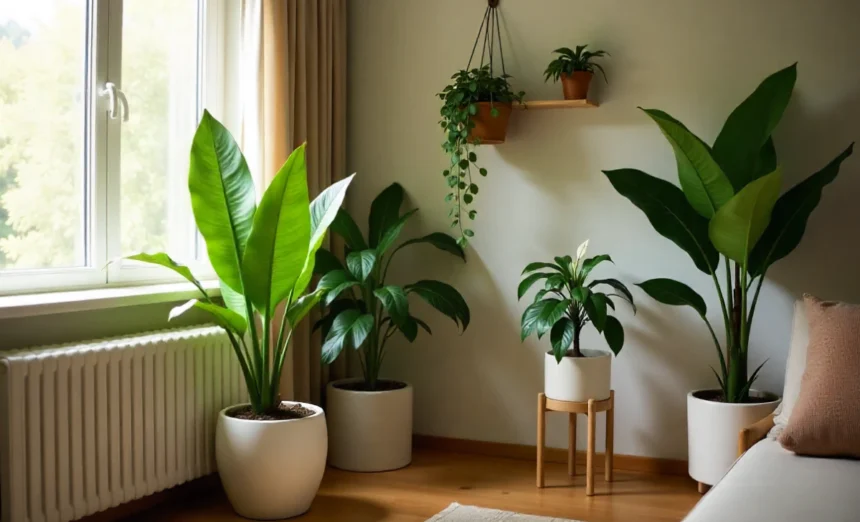Dark corners and dim rooms don’t have to stay bare. Many Australian homes have spaces that receive limited natural light—think hallways, bathrooms, or rooms with small windows facing south. These areas often feel forgotten and lifeless.
The good news? You can transform these spaces with the right greenery. The best indoor plants for low light don’t just survive in dim conditions—they thrive. This guide covers everything you need to know about choosing, caring for, and styling low-light plants that will breathe life into your home’s darker spaces.
You’ll discover which plants work best, how to keep them healthy, and practical styling tips that turn any dim room into a green sanctuary.
What Qualifies as “Low Light” and How to Evaluate Your Space
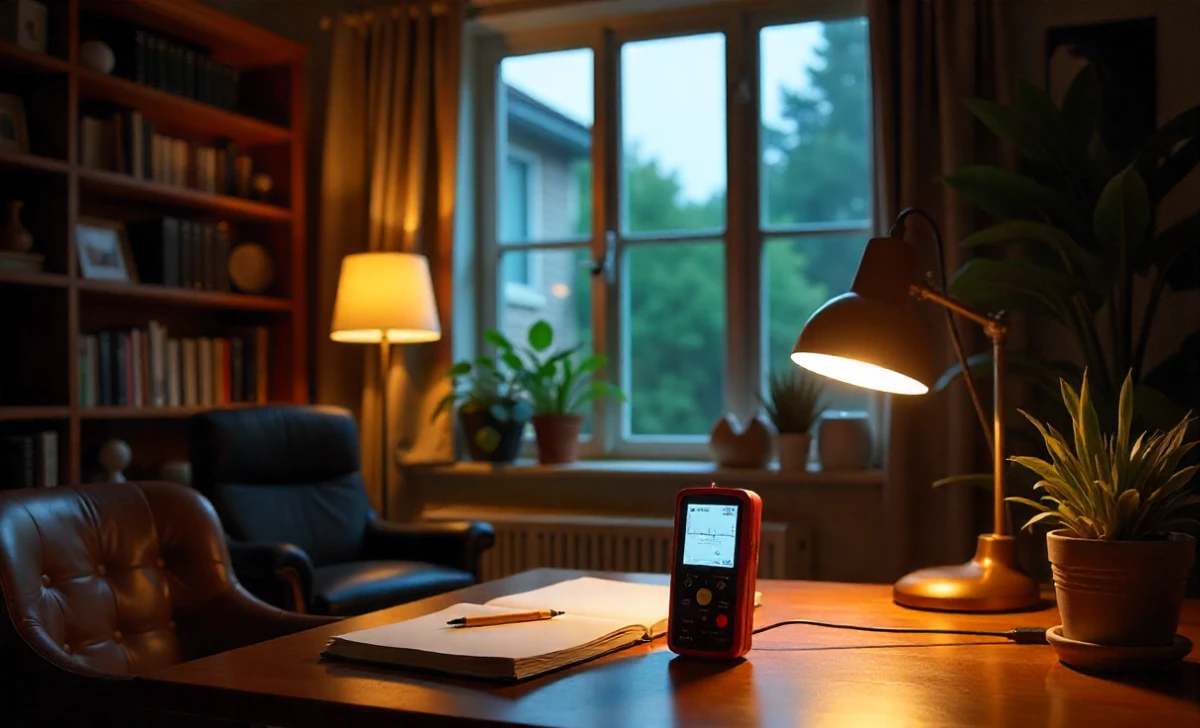
Many people confuse “low light” with “no light.” Low light means your space receives some natural light during the day, but it’s limited. Think of areas that get indirect sunlight or rooms where you can read a newspaper during daylight hours, but might struggle with fine print.
How to measure your light levels:
You don’t need expensive equipment. Download a light meter app on your smartphone or try the “hand test.” Hold your hand 30cm above where you’d place a plant. If you can see a faint shadow, you have low light. No shadow at all means you’re dealing with very low light conditions.
Professional gardeners measure light in lux units. Low light ranges from 25-100 lux, while bright indirect light sits around 400-800 lux. Most light meter apps give you these readings for free.
Artificial lighting solutions:
LED grow lights can supplement natural light effectively. Place them 30-60cm above your plants and run them for 6-8 hours daily. Full-spectrum LED bulbs work best and cost less to run than traditional fluorescent options.
Don’t rely on regular household bulbs. They generate heat but provide little usable light for plants. Invest in proper plant lighting if you want genuine results.
10 Best Indoor Plants for Truly Low-Light Rooms
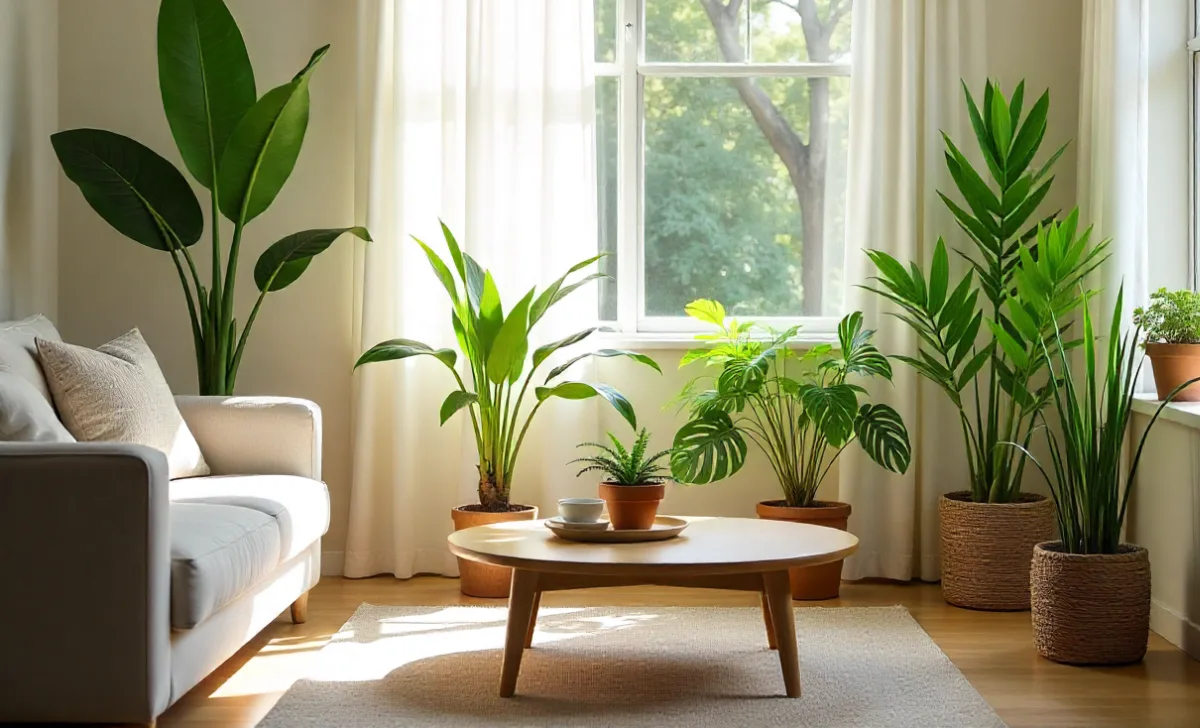
These plants handle Australia’s indoor conditions brilliantly and forgive beginner mistakes:
Snake Plant (Sansevieria trifasciata) Handles neglect like a champion. Water monthly and forget about it. Perfect for busy Australians who travel frequently.
ZZ Plant (Zamioculcas zamiifolia) Glossy leaves reflect available light, making rooms appear brighter. Stores water in thick stems, so overwatering kills it faster than underwatering.
Pothos (Epipremnum aureum) Trails beautifully from shelves or hangs in baskets. Golden varieties add warmth to dark spaces. Grows in water or soil.
Peace Lily (Spathiphyllum) produces white flowers even in low light. Droops dramatically when thirsty—your built-in watering reminder.
Cast Iron Plant (Aspidistra elatior) Lives up to its tough name. Survives air conditioning, heating, and irregular watering. Victorian-era favourite that’s making a comeback.
Chinese Evergreen (Aglaonema) Colourful leaves in pink, red, and silver patterns. Adds visual interest without needing bright light.
Spider Plant (Chlorophytum comosum) produces baby plants you can propagate and share. Removes formaldehyde from air—bonus for newer homes.
Parlour Palm (Chamaedorea elegans) adds tropical vibes to any room. Grows slowly, so your $20 investment lasts for years.
Philodendron (Heart-leaf variety) Heart-shaped leaves create romantic appeal. Climbs or trails, depending on how you train it.
Arrowhead Vine (Syngonium podophyllum) Changes leaf shape as it matures. Young plants have arrow-shaped leaves; older ones develop lobes.
Care Strategies to Keep Low-Light Plants Thriving
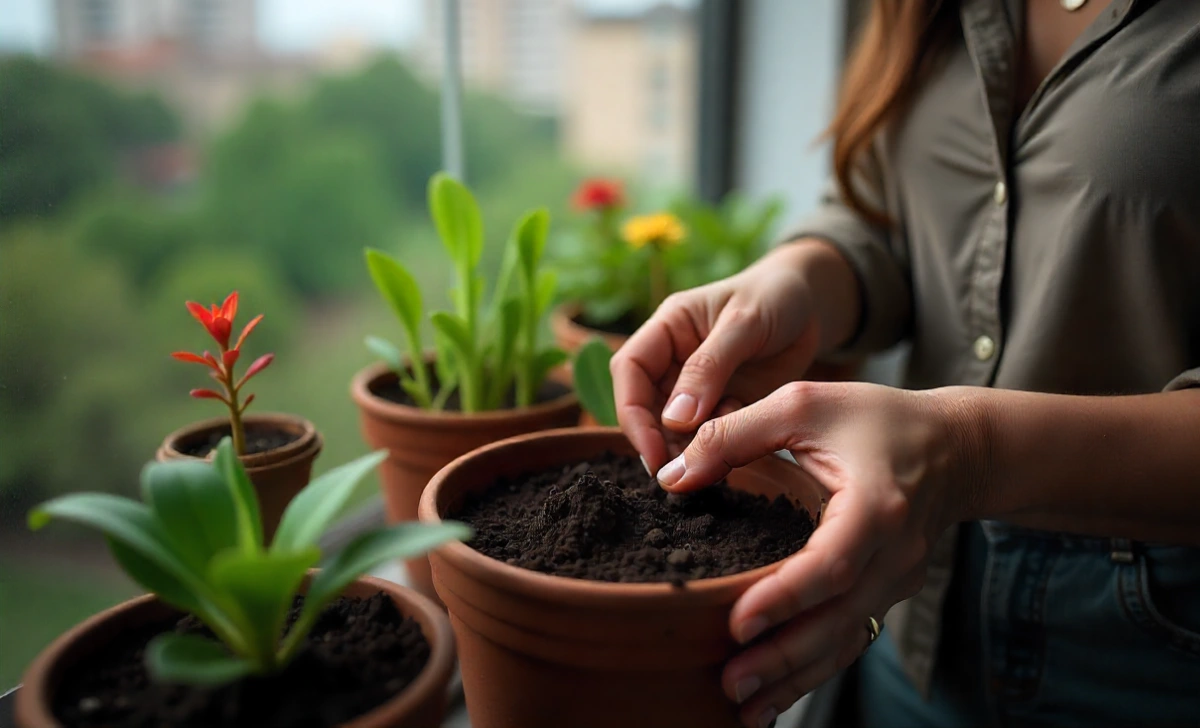
Low-light plants grow more slowly than their sun-loving cousins. This means they need less water, fertiliser, and attention—but they’re not maintenance-free.
Watering wisdom: Check soil moisture with your finger. Push it 2-3cm into the soil. If it’s dry, water thoroughly until liquid drains from the bottom. If it’s still moist, wait a few more days.
Most low-light plant deaths come from overwatering, not underwatering. Australian tap water works fine for most plants, but let it sit overnight to reduce chlorine levels.
Soil and drainage essentials: Use a quality potting mix designed for indoor plants. Avoid garden soil—it’s too heavy and doesn’t drain properly in containers.
All pots need drainage holes. Place saucers underneath to protect furniture, but empty them after 30 minutes. Standing water creates root rot faster than anything else.
Humidity and temperature control: Most homes in Australia have adequate humidity for these plants. If you run heating or cooling constantly, group plants together to create a microclimate.
Keep plants away from air conditioning vents and heaters. Sudden temperature changes stress them more than gradual seasonal variations.
Fertilising guidelines: Feed monthly during spring and summer with liquid houseplant fertiliser diluted to half strength. Stop fertilising in winter when growth slows down.
Overfertilising burns roots and creates weak, leggy growth. Less is more with low-light plants.
Styling & Grouping for Maximum Decor Impact
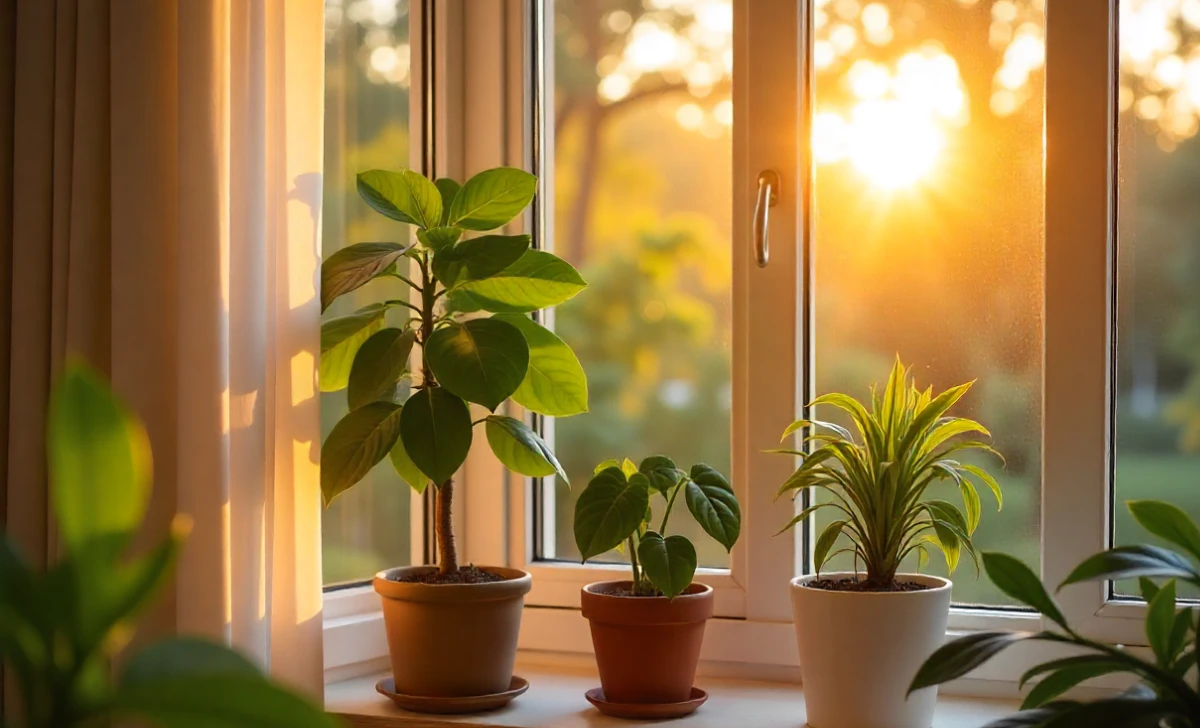
Strategic placement transforms individual plants into stunning displays. Think beyond just putting plants wherever you have space.
Create visual layers: Mix heights and textures for dynamic displays. Place tall snake plants behind trailing pothos, with medium-height peace lilies in front. This creates depth and makes small spaces feel larger.
Use plant stands, wall-mounted shelves, and hanging baskets to work vertically. Corner arrangements work particularly well in Australian homes with open-plan layouts.
Container coordination: Choose containers that complement your existing décor. White ceramic pots suit minimalist spaces, while natural timber planters warm up contemporary rooms.
Maintain consistent colour themes across multiple plants. Three plants in matching white pots look more sophisticated than three different containers.
Pet-safe considerations: Snake plants, peace lilies, and pothos are toxic to cats and dogs. Keep them high on shelves or choose pet-friendly alternatives like spider plants and parlour palms.
Create designated plant zones if you have curious pets. Baby gates work for puppies; wall-mounted planters keep plants away from jumping cats.
Lighting enhancement: Position plants near mirrors to reflect available light. Even small mirrors double the visual impact of natural light.
Light-coloured walls behind plants make green foliage pop. Dark walls create a dramatic contrast but need more artificial lighting to keep plants healthy.
Real-Life Case Study: Transforming a Dim Hallway
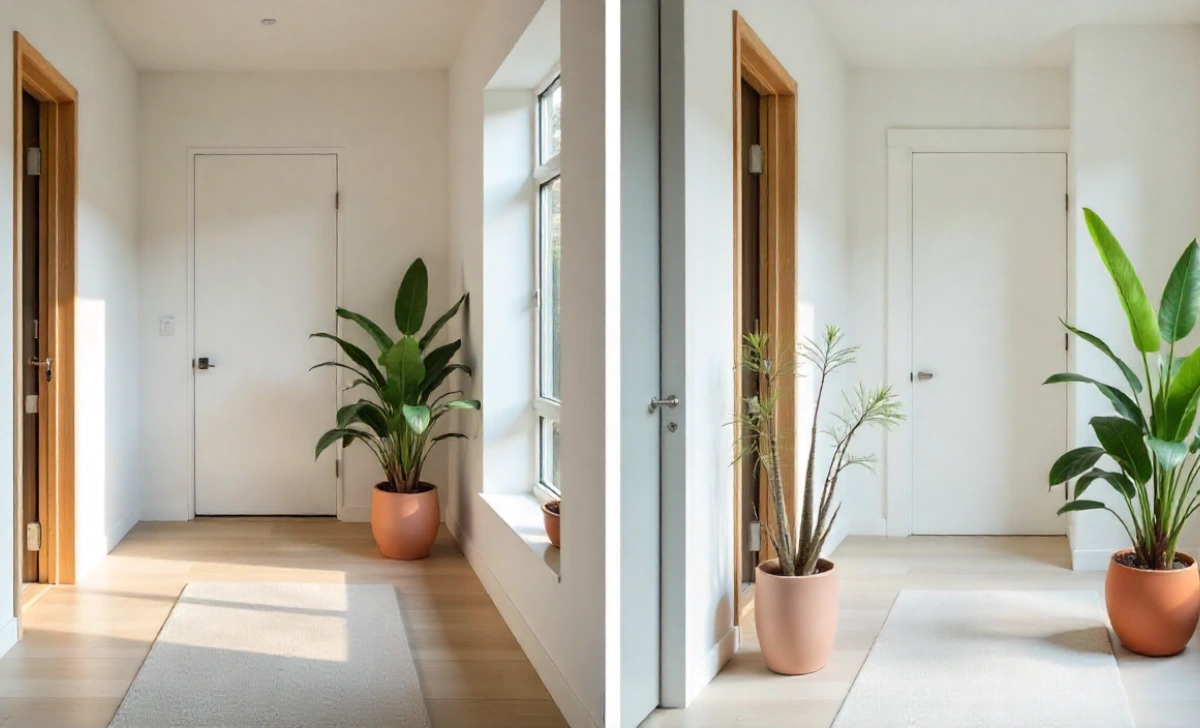
Sarah from Melbourne faced a common problem: her hallway connecting the living room to the bedrooms received no direct sunlight. The 3-metre corridor felt like a dark tunnel that divided her home.
The solution: She installed three floating shelves at different heights along one wall. A tall snake plant anchored the end corner, while trailing pothos cascaded from the highest shelf. Two Chinese evergreens with pink-tinged leaves added colour at eye level.
Plant placement strategy:
- Floor level: One large snake plant in a white ceramic pot
- Mid-level shelf: Two Chinese evergreens for colour impact
- High shelf: Trailing pothos to soften hard lines
- Opposite wall: Mirror to reflect available light
Maintenance routine: Sarah waters all plants monthly using a long-spouted watering can. She wipes leaves with a damp cloth every few weeks to remove dust and keep them glossy.
Results after six months: The hallway now feels welcoming rather than dividing the house. Guests comment on the “green corridor” that connects spaces naturally. The plants remain healthy with minimal care, and Sarah has propagated the pothos to add more trailing elements.
The total investment was under $150 for plants and containers, plus $80 for shelving. The transformation took one weekend to complete.
Transform Your Low-Light Spaces Today
The best indoor plants for low light don’t just survive in dim conditions—they create beautiful, liveable spaces that enhance your home’s appeal. Whether you choose resilient snake plants or colourful Chinese evergreens, these plants prove that every corner of your home can be green and welcoming.
Start with one or two plants to test your space and care routine. Once you see how these low-maintenance beauties transform your rooms, you’ll want to add more. Your dim hallways, bathrooms, and corners are waiting for their green makeover.
Which low-light plant will you try first? Share your plant transformation stories in the comments below, or save this guide for your next plant shopping trip.
